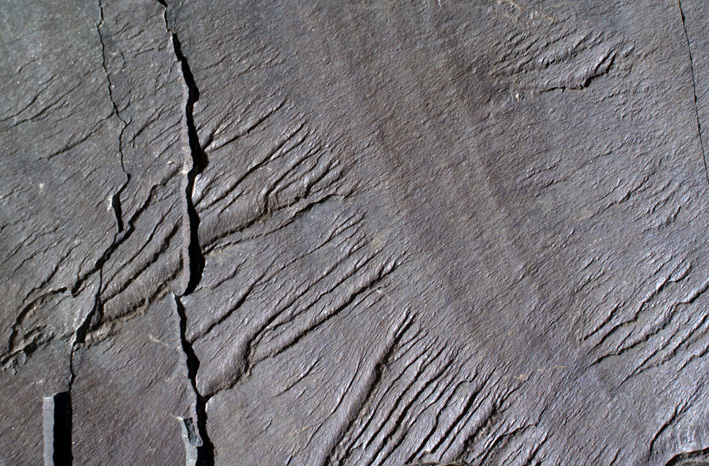| This is a photographic overview of the features of the Sedimentary Series as exposed in Zanskar, Ladakh Himalayas. There are two different sedimentary sequences: the first tectonized and metamorphosed, comprised mostly of biotite quartzite interlayered with dolomite corresponding to the Phe Formation plus Karsha Formation(Fuchs 1987), the second seemingly un-metamorphosed and only weakly deformed, comprised of purple sandstones, and purple conglomerates with a sandy matrix, and a dolomite conglomerate, with purple sandstone pebbles (Thape Fm in Fuchs 1987). |
Phe plus Karsha Formation: metamorphosed sandstone-dolomite sequence
Precambrian Phe Fm (from Epard and Steck 2004): "The base of the stratigraphic section is formed by a monotonous pile of over 10 km of shallow water submarine graywackes known as the Haimantas or Phe Formation (Griesbach 1891, Frank et al. 1995)."
From Desez (PhD thesis 1999): "The transition between the Phe Formation and the overlying Karsha Formation is gradational and defined by the apparition of the first dolomitic horizons." In the section from Reru to Lhakhang, the Phe Formation first appears in contact with orthogneisses close to the village of Ichar. This is generally a fine grained, relatively massive biotite-quartzite, layers up to 1m thick more typically 10-50cnm thick, capped by thin silt layers (1-5 cm thick). Quartzite shows occasional (but relatively rare) graded-bedding or cross-bedding.
Cambrian Karsha Fm from Epard and Steck (2004): "Cambrian Karsha Fm (Nanda & Singh 1977) corresponds to some hundreds up to one thousand meters thick alternation of graywackes, similar to those found in the Phe Fm, with yellow dolomites and, locally, gray marbles." Karsha Fm description by Fuchs (1987): "thick alternation of argillo-arenaceous and carbonate rocks succeeding on the Phe Formation."
Karsha Fm description by Fuchs (1987): "thick alternation of argillo-arenaceous and carbonate rocks succeeding on the Phe Formation."
In our study from Reru to Lhakhang, thick layers of dolomite appear first in the vicinity of the village of Char, NW of the entrance to the valley towards Phugtal. These continue all the way to Kye/Shi and to the area just NW of Gumbaranjon. In the mountains the dolomite can be seen at a large scale as dolomite layers 100s of metres thick within black biotite quartzite.
The photos shown here cover mesoscale features that may reflect large scale ones.
From my observations, I found considerable evidence for interlayering of dolomite layers with quartzite also in the section between Ichar and Char , similar in nature to those SE of Char. I also found that the nature of the biotite quartzite seemed similar throughout, raising the question of whether we are looking at different formations or a continuous sequence.
Relationships between quartzite and dolomite
Ordovician Thaple Formation (Fuchs 1987): Un-metamorphosed purple sandstone-conglomerate sequence
This is comprised by purple sandstone associated with conglomerate with purple sand matrix, and orange dolomite conglomerate. According to Epard and Steck (2004) the Thaple Fm lies unconformably above the Karsha Fm, and this is our impression as well. From Fuchs (1987): "The Thaple Formation (some tens to 200 m thick, attaining 300 m in the Chumik Marpo area) is composed of conglomerates, quartzites, sandstones, carbonate sandstones, slates and thin lenses of dolomite. The red, purple and brown con g 10mera te s prevail in the lower part of the formation. They are unstratified to thick-bedded, ill-sorted and contain moderately to wellrounded components up to 30 cm sizes; the latter are varicoloured sandstones, quartzites and slates of the same formation, and dolomites, dolomites, phyllites, quartz, greenstone etc. from the beds underlying."
